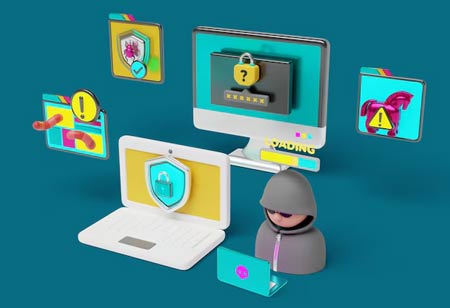THANK YOU FOR SUBSCRIBING
Be first to read the latest tech news, Industry Leader's Insights, and CIO interviews of medium and large enterprises exclusively from Education Technology Insights
Cybersecurity Strategies for Digital Learning Environments
By fostering a collaborative approach to cybersecurity, where providers, parents, and students work together, the EdTech ecosystem can grow in a secure and trusted learning environment.

By
Education Technology Insights | Monday, August 25, 2025
Stay ahead of the industry with exclusive feature stories on the top companies, expert insights and the latest news delivered straight to your inbox. Subscribe today.
By fostering a collaborative approach to cybersecurity, where providers, parents, and students work together, the EdTech ecosystem can grow in a secure and trusted learning environment.
FREMONT, CA: The rapid rise of EdTech has improved learning, making education more accessible and interactive than ever before. However, this digital shift also introduces significant cybersecurity challenges. As more student data is collected, stored, and shared online, the need for strong, reliable security measures has become more critical than ever.
Why Cybersecurity Matters in EdTech
The rise of EdTech has transformed the learning experience, offering innovative tools and platforms that cater to diverse educational needs. However, this digital evolution also introduces significant cybersecurity risks. EdTech platforms store and process vast amounts of sensitive data, including personal information, academic records, and even health-related details. Data breaches could have severe consequences, such as identity theft, financial fraud, and reputational damage. Safeguarding this data is not just a technical necessity but fundamental to maintaining trust within the educational community. Parents and students entrust their personal information to EdTech providers, and a breach of this trust can erode confidence across the entire industry. Moreover, adherence to stringent data protection regulations, such as the General Data Protection Regulation (GDPR) in the EU and the California Consumer Privacy Act (CCPA), is critical. Non-compliance with these laws can lead to hefty fines and legal repercussions, underscoring the importance of robust cybersecurity measures.
Key Cybersecurity Measures for EdTech Providers
To address these challenges, EdTech providers must adopt a comprehensive approach to cybersecurity. Strong data encryption ensures that sensitive information remains unreadable even if accessed by unauthorized parties. Implement robust access controls with multi-factor authentication and role-based access, complemented by regular security audits to safeguard critical systems and data.
Employee training is another critical element, equipping staff with the knowledge to recognize phishing attempts and adhere to secure coding practices. In addition, having a well-defined incident response plan allows organizations to act swiftly and effectively in the event of a breach. Data minimization strategies, which involve collecting and storing only necessary information, reduce the potential impact of a breach. Secure data transfer protocols like HTTPS further protect information during transit. Third-party risk management is vital, as it ensures that external vendors adhere to high-security standards, safeguarding the overall ecosystem.
The Role of Parents and Students
While EdTech providers bear the primary responsibility for cybersecurity, parents and students also have a vital role to play. Selecting reputable platforms with a strong track record in cybersecurity is the first step in ensuring data safety. Encouraging students to create robust, unique passwords for their accounts adds a layer of protection. Parents and students should remain vigilant against phishing attempts, avoiding interactions with suspicious emails or links that could compromise personal information. Staying informed about the latest cybersecurity threats and best practices empowers users to contribute actively to a secure digital environment.
Cybersecurity is an ongoing challenge for the EdTech industry. By implementing robust security measures, EdTech providers can protect student data, maintain trust, and ensure a safe and secure learning environment. Parents and students must stay informed and vigilant to safeguard the future of education in the digital age collaboratively.







